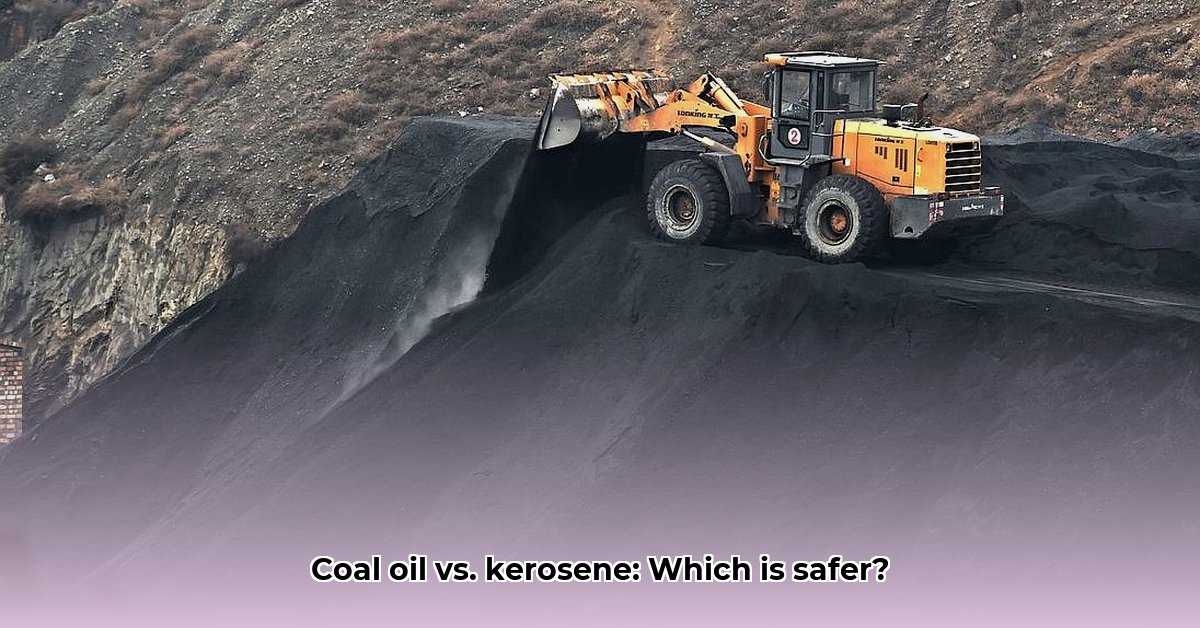
Coal oil and kerosene: These fuels, once synonymous with lighting homes, retain surprising relevance today. This comparison explores their historical context, current applications, environmental impact, and future potential, focusing on key performance indicators (KPIs) and stakeholder interests.
A Historical Overview: From Coal Oil Lamps to Kerosene's Reign
Before widespread electrification, coal oil (also known as lamp oil) dominated home lighting. Produced by heating coal in the absence of air and collecting the resulting vapors, it provided a simple, inexpensive light source. However, its smoky flame and pungent odor left much to be desired. This contrasts sharply with kerosene, refined from petroleum, which offered a cleaner, brighter, and more pleasant-smelling alternative. Kerosene's superior efficiency – providing more light per unit volume – quickly cemented its dominance. This historical transition highlights the continuous evolution of fuel technology driven by consumer needs and improved efficiency.
Coal Oil vs. Kerosene: A Comparative Analysis
To understand the differences, let's examine key characteristics:
| Feature | Coal Oil | Kerosene |
|---|---|---|
| Source | Coal | Petroleum (crude oil) |
| Refining | Simpler, less refined process | More complex, multi-step refining process |
| Flame Quality | Smoky, dim, inefficient | Cleaner, brighter, efficient |
| Odor | Strong, unpleasant | Mild, less offensive |
| Efficiency | Lower energy output per unit volume | Higher energy output per unit volume |
| Availability | Historically limited to coal-producing regions | More widely available globally, tied to oil markets |
| Modern Uses | Primarily obsolete; niche applications only | Jet fuel, heating fuel, specialized lighting |
| Environmental Impact | Higher emissions, significant soot production | Lower emissions than coal oil, but still a fossil fuel |
But how significant are these differences? Is the cleaner burn of kerosene worth the cost difference? The answer, as we will see, depends heavily on context and stakeholder perspective.
Environmental Implications: A Burning Issue
Both fuels release greenhouse gases during combustion, contributing to climate change. However, coal oil's significantly higher particulate matter emissions pose a greater threat to air quality and human health. While kerosene's impact is less severe than coal oil's, it remains a fossil fuel, and its continued use contributes to carbon emissions. The long-term environmental consequences of both fuels are a critical area of ongoing research and policy debate.
Stakeholder Perspectives: A Multifaceted View
Numerous stakeholders are impacted by the production and use of these fuels:
- Energy Companies: Profit from extraction, refining, and distribution.
- Governments: Concerned with energy security, environmental regulations, and public health.
- Consumers: Directly affected by fuel availability and cost.
- Environmental Groups: Advocate for sustainable alternatives.
- Researchers: Investigating cleaner fuels and mitigating environmental impacts.
Each group's perspective influences policy decisions and technological advancements, underscoring the complexity of the issue.
The Future of Coal-Derived Fuels: Coal-to-Liquids Technology
While coal oil’s use is largely historical, "coal-to-liquids" (CTL) technology holds the potential to convert coal into liquid fuels, including a kerosene-like product. However, the success of CTL technology hinges on the development of efficient and cost-effective carbon capture and storage (CCS) systems; without CCS, the environmental impact would be unacceptable. The economic viability of CTL fuels also remains a major barrier to widespread adoption.
Lifecycle Cost Comparison: Kerosene vs. Potential Coal-to-Liquid Kerosene
Analyzing the lifecycle costs of kerosene and potential CTL fuels requires a thorough assessment of all stages, from extraction to end-use, encompassing environmental impacts. CTL fuels typically have higher initial production costs, while kerosene’s cost is largely determined by crude oil prices. Government policies, including carbon taxes and environmental regulations, play a crucial role in shaping the total lifecycle cost for both fuels.
Choosing Wisely: Balancing Needs with Sustainability
Kerosene's historical triumph over coal oil illustrates the ongoing push for more efficient and environmentally friendly energy sources. Although fossil fuels like kerosene will likely remain relevant, transitioning to renewable alternatives is crucial for long-term sustainability. An informed decision about which fuel to utilize requires a careful balancing act, factoring in cost, availability, and environmental impact.